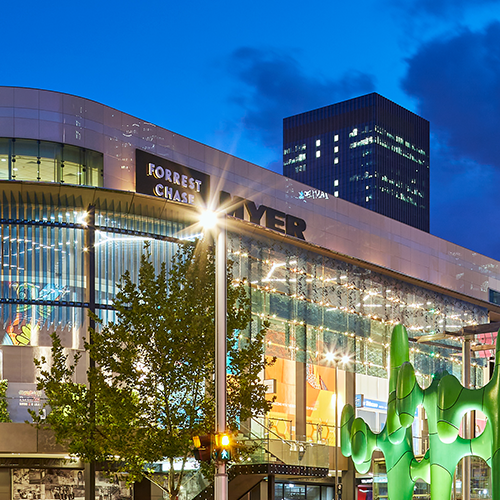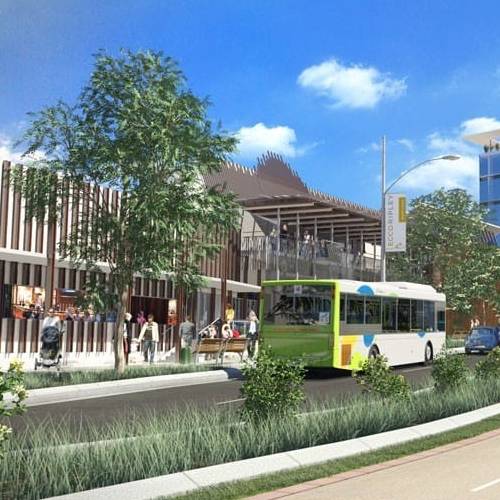Australia is a continent of immense coastal urbanisation. Approximately 85 percent of our population lives within 50km of the ocean, and where our towns, cities and suburbs aren’t directly connected to the coastline the majority have been built by rivers, lakes and reservoirs. Our climate ensures our beaches and bays are filled with activity on weekends and public holidays, and our culture of a life lived at the water’s edge is deeply embedded. It is natural, therefore, that our nation should be a leader in the field of waterfront urban design.
But what makes a truly great waterfront? Here we present ten considerations that we undertake when planning the perfect place at the water’s edge.
1. People come first
When planning, we make sure our designs match the aspirations of the local community and potential users. A robust and thorough program of stakeholder engagement is an absolute must.
Urban designer Naden Scarfone describes the process as “fundamental to equitable and representative decision-making [in that] it provides a link between the public and decision-makers in a bureaucratic environment”. Read more about our approach to stakeholder engagement.
2. Keep your eyes on the prize
Once a consensus of public opinion has been identified a firm stance must be taken to achieve community-prescribed goals. When the private sector enters the arena, it is all too simple to allow short-term financial goals and the interests of commercial developers to skew plans.
The long-term success of any waterfront development is reliant upon a biophilic approach to design that must be carefully balanced with economic imperatives.
3. Mix the blue with green
We live in a time when we are beginning to understand the impact that human settlements are having upon the spaces around us, and no other developments in Australia should be treated as sensitively as those that border our rivers, lakes and oceans.
In the main, environmentalists and marine biologists are promoting the restoration of our shorelines and advocating for the retention of natural vegetation wherever possible. Maintaining water quality and protecting native flora and fauna must now always be a primary objective, so the inclusion of raised boardwalks and fenced-off zones should always be a serious consideration. The natural beauty of Australia’s shorelines means that restoration is often an advantage when considering the aesthetic appeal of any design.
4. Carefully consider what’s already there
An exemplary waterfront design should make the best use of its existing assets and local vernacular. Geological shapes and contours that have been formed by nature often create a template from which to shape a design. A ‘less is more’ approach to waterfront planning often results in a more environmentally friendly outcome that requires less carbon emission in the construction phase.
In the main, our waterways and bays also have a rich history of industry and leisure pursuits, and subtle nods to a place’s heritage often ground it in its present-day context and setting.
5. Connection is key
The well-worn cliché “build it and they will come” only holds credence if suitable transport nodes are positioned to allow easy access. Large swathes of Australia’s coastline are flanked by protected bushland and require sensitive planning to allow an acceptable flow of people to and from them.
Depending on existing transportation access, all forms of transit should be considered. Pedestrian access and cycle pathways are essential, and linkages to existing train and light-rail terminals should be carefully planned. With forethought, minimal alterations to existing road infrastructure will reduce overall costs, ecological impact and inconvenience to the local community.
6. Consider the chain reactions
Many of Australia’s shorelines are dotted with developments that form chains along the coast. In each of the waterside projects that Hames Sharley undertakes, we look to consider the facets that allow neighbouring developments succeed or fail.
We carefully consider the uses that will be in direct competition with similar developments close by, and what is missing or over-accommodated from a wider area study. Each place should complement its neighbours to offer a wider variety of uses to local residents and visitors.
7. Adaptability and perennial usage
We live in a time of premium land costs and rapid expansion so commercial considerations are vital in any urban design. It is therefore of paramount importance that all development assets be maximised for year-round usage and adaptability across the seasons.
In most of Australia’s states and territories our climate allows for human engagement with waterside developments for most of the year, however, a nuanced approach must be taken to guarantee optimum use in the less temperate seasons.
8. Decorate it with jewels
The most successful waterside developments are often adorned with installations of public art that act as beacons to draw attention and generate wonder.
Whether it be a day at the beach or enjoying leisure pursuits on rivers and lakes, it is an intrinsic part of Australian life that families gather by the water, and it is often children and the younger generations who engage the most with functional sculptures or robust pieces of art placed to add aesthetic appeal. Public art may also act as designated meeting points in larger developments that may be crowded on weekends or public holidays.
9. Build to frame rather than focus
Architectural responses to a shoreside development should take into consideration anything that may block views of the ocean. The water itself is the star of the show and should always be considered as the centrepiece around which the development can grow and prosper. It’s important that buildings be secondary to the nature that surrounds them. They should adequately perform their function while never overstepping their mark.
10. Give it back to the people
Once the planning, design and construction are completed the place should be delivered to the initial stakeholder groups with a mandate to maintain the place for future generations.
Through carefully selected groups and committees, the end users should act as caretakers, with an eye that is attuned to identifying the changing wants and needs of the place. Like no other country on earth, Australia has a rich tradition of this through surf lifesaving clubs and ecological and community groups and societies. Engaging with or playing an active part in setting up these groups allows the planner-designer to hand over a place that will be successful on multiple levels for years to come.






